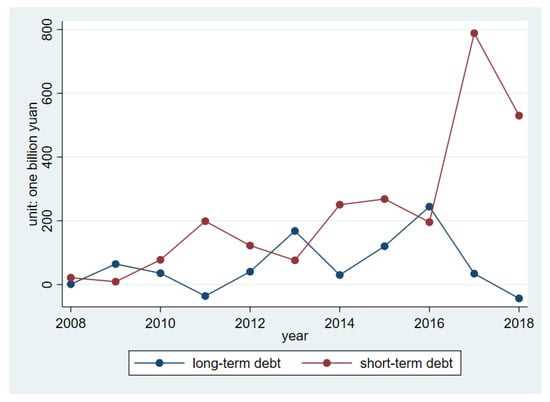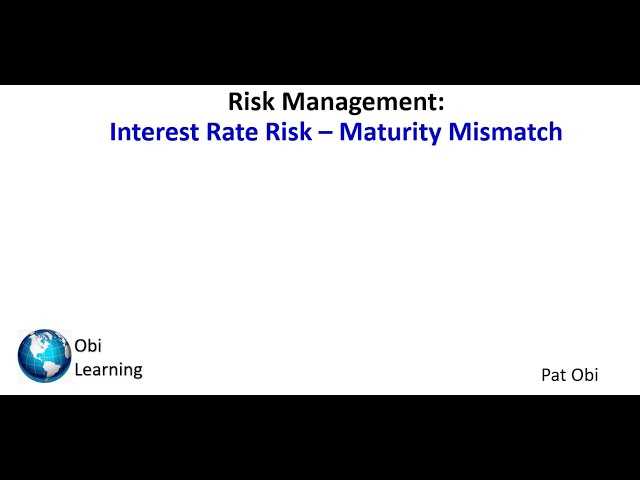Importance of Maturity Mismatch in Corporate Finance
Maturity mismatch is a critical concept in corporate finance that refers to the discrepancy between the maturity of a company’s assets and liabilities. It occurs when a company’s short-term liabilities, such as loans or debt obligations, have a shorter maturity period than its long-term assets, such as investments or receivables.
One of the key reasons why maturity mismatch is important in corporate finance is its impact on liquidity risk. When a company’s short-term liabilities come due before its long-term assets generate sufficient cash flow, it may face difficulties in meeting its obligations. This can lead to liquidity problems, potentially resulting in default or bankruptcy.
Furthermore, maturity mismatch affects a company’s ability to take advantage of investment opportunities. If a company’s long-term assets are tied up in illiquid investments, it may miss out on short-term investment opportunities that could generate higher returns. This can limit the company’s growth potential and hinder its ability to compete in the market.
Maturity mismatch also has implications for interest rate risk. If a company’s short-term liabilities have variable interest rates while its long-term assets have fixed interest rates, changes in interest rates can lead to a squeeze on profit margins. This can occur when the cost of borrowing increases while the returns on long-term investments remain unchanged.
Moreover, maturity mismatch can affect a company’s ability to refinance its debt. If a company’s short-term debt comes due and it is unable to secure new financing, it may be forced to sell its long-term assets at unfavorable prices to meet its obligations. This can result in significant losses and further exacerbate the company’s financial difficulties.
Illustration of Maturity Mismatch in Real-world Scenarios
Let’s consider a real-world scenario to illustrate the concept of maturity mismatch. Imagine a manufacturing company that relies heavily on short-term bank loans to finance its operations. These loans typically have a maturity of one year or less. On the other hand, the company’s major assets, such as machinery and equipment, have a much longer useful life and may take several years to generate cash flows.
To mitigate the risks associated with maturity mismatch, companies can employ various strategies. One approach is to match the maturity of assets and liabilities, ensuring that cash flows from long-term assets align with long-term liabilities. This can be achieved through long-term financing options, such as issuing bonds or obtaining long-term loans.
Another strategy is to actively manage cash flows and liquidity. Companies can maintain a cash reserve or establish a line of credit to cover short-term obligations. By closely monitoring cash flows and adjusting financing arrangements, businesses can reduce the impact of maturity mismatch.
Consequences of Maturity Mismatch
1. Liquidity Risk
One of the major consequences of maturity mismatch is liquidity risk. When a company’s short-term liabilities exceed its short-term assets, it may face difficulties in meeting its immediate financial obligations. This can lead to cash flow problems and potentially even bankruptcy if the company is unable to generate enough liquidity to cover its short-term liabilities.
2. Interest Rate Risk
Maturity mismatch can also expose a company to interest rate risk. If a company has long-term assets with fixed interest rates and short-term liabilities with variable interest rates, it may face difficulties in managing its interest rate exposure. Changes in interest rates can significantly impact the profitability of the company, as it may be paying higher interest on its short-term liabilities while earning lower interest on its long-term assets.
3. Funding Cost

Maturity mismatch can also affect the funding cost of a company. If a company relies heavily on short-term funding to finance its long-term assets, it may have to pay higher interest rates to attract investors. This can increase the overall cost of borrowing for the company and reduce its profitability.
4. Financial Instability
Maturity mismatch can create financial instability in a company. If a company’s assets and liabilities are not properly aligned in terms of maturity, it may face difficulties in managing its cash flow and maintaining a stable financial position. This can erode investor confidence and make it difficult for the company to raise capital in the future.
5. Regulatory Compliance
Maturity mismatch can also have regulatory implications for a company. Many regulatory authorities require companies to maintain a certain level of liquidity and manage their interest rate risk effectively. Failure to comply with these regulations can result in penalties and fines, which can further impact the financial performance of the company.
Avoidance Strategies for Maturity Mismatch

In corporate finance, managing maturity mismatch is crucial to ensure the stability and sustainability of a company’s financial position. Maturity mismatch occurs when the maturity of a company’s assets does not align with the maturity of its liabilities. This can lead to significant risks and potential financial instability.
Here are some effective strategies that companies can employ to avoid maturity mismatch:
1. Matching Maturities:
One of the simplest strategies is to match the maturities of assets and liabilities. This involves aligning the maturity dates of the company’s loans, bonds, and other debts with the expected cash flows from its assets. By doing so, the company reduces the risk of cash flow mismatches and ensures that it has sufficient funds to meet its obligations when they become due.
2. Diversification:
Another strategy is to diversify the maturity profiles of assets and liabilities. This involves spreading out the maturity dates of the company’s assets and liabilities across different time periods. By doing so, the company reduces the concentration of risk and increases its ability to withstand unexpected changes in interest rates or market conditions.
3. Liability Management:
Companies can also actively manage their liabilities to avoid maturity mismatch. This can involve refinancing existing debts, renegotiating loan terms, or issuing new debt securities with different maturity dates. By proactively managing their liabilities, companies can adjust their debt profile to better match their asset maturity profile.
4. Cash Flow Management:
Effective cash flow management is essential to avoid maturity mismatch. Companies should closely monitor their cash inflows and outflows and ensure that they have sufficient liquidity to meet their short-term obligations. This can involve implementing cash flow forecasting, optimizing working capital, and maintaining adequate cash reserves.
Hedging strategies can be used to mitigate the risks associated with maturity mismatch. For example, companies can use interest rate swaps or options to hedge against changes in interest rates. By hedging their exposure to interest rate fluctuations, companies can reduce the impact of maturity mismatch on their financial position.
Implementing these avoidance strategies requires careful analysis and planning. Companies should regularly assess their asset and liability profiles, monitor market conditions, and adjust their strategies accordingly. By effectively managing maturity mismatch, companies can enhance their financial stability and reduce the potential for financial distress.

Emily Bibb simplifies finance through bestselling books and articles, bridging complex concepts for everyday understanding. Engaging audiences via social media, she shares insights for financial success. Active in seminars and philanthropy, Bibb aims to create a more financially informed society, driven by her passion for empowering others.
